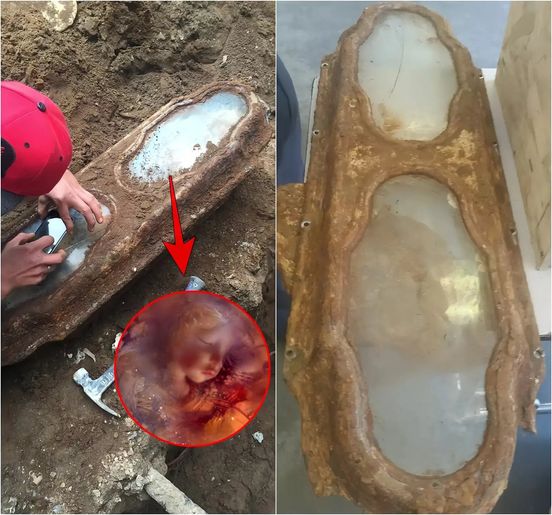The Si-Te-Cah giants, a captivating part of American folklore, have long intrigued historians, archaeologists, and enthusiasts of the supernatural. Central to this legend is Lovelock Cave, located in northern Nevada, where the remains of what are believed to be these mysterious giants were discovered in the early 20th century. This cave, with its rich history and peculiar findings, offers a glimpse into a story that blends myth and reality.
According to local Native American tribes, particularly the Paiutes, the Si-Te-Cah were a race of tall, red-haired giants who inhabited the area long before European settlers arrived. Descriptions of these giants vary, but they are often depicted as fearsome creatures that terrorized the tribes, stealing livestock and attacking villages. The name “Si-Te-Cah” translates to “tule-eaters,” referencing their reported diet of the abundant tules found in the wetlands surrounding the cave.

In 1911, a team of miners exploring Lovelock Cave stumbled upon a treasure trove of artifacts and skeletal remains. Among their discoveries were mummified remains that exhibited unusual features—remarkable height and striking red hair. This finding ignited interest and speculation, leading some to believe that the skeletons belonged to the legendary Si-Te-Cah giants. The miners reportedly took several of these remains and artifacts to a local museum, where they were eventually displayed.
However, the intrigue surrounding the Si-Te-Cah giants deepened with the discovery of the remains themselves. The skeletal remains measured over seven feet tall, supporting the notion that these were indeed the giants spoken of in local lore. Yet, scientific analysis of these bones has been limited, leading to ongoing debates about their authenticity and origin. Critics argue that the remains may belong to individuals suffering from medical conditions that caused abnormal growth, rather than an entirely different race of giants.

The legend of the Si-Te-Cah continues to spark interest and research. In 1924, further excavations in Lovelock Cave revealed more artifacts, including tools, woven baskets, and even preserved remnants of food. These discoveries paint a picture of a complex society that once thrived in the area. However, the question of the giants’ existence remains elusive, caught between the realms of folklore and scientific scrutiny.
The Paiutes have long maintained that their stories about the Si-Te-Cah hold truth, asserting that the giants were driven into the cave by their ancestors during a fierce battle. According to oral tradition, the tribes set fire to the cave’s entrance, trapping the giants inside. The burning of the cave is said to have led to the giants’ demise, with their spirits lingering as a warning to others. This narrative highlights the significance of the Si-Te-Cah in Paiute culture, serving as a reminder of the struggles faced by Indigenous people against external threats.
Modern interest in the Si-Te-Cah has surged, fueled by a mix of curiosity and a desire to explore the boundaries of what is possible. Enthusiasts of ancient mysteries and conspiracy theories often link the Si-Te-Cah to other giant legends found across the globe, suggesting that stories of these beings may represent a shared history of ancient civilizations. Some researchers are even delving into the possibility of extraterrestrial influences, theorizing that the characteristics attributed to the giants could be evidence of alien encounters.

As excavations and investigations continue, Lovelock Cave stands as a testament to the interplay of legend and reality. The enigmatic Si-Te-Cah giants challenge our understanding of history and anthropology, prompting us to explore the rich tapestry of folklore while considering the evidence that remains. The story of the Si-Te-Cah is not merely about giants; it’s about the cultural narratives that shape our understanding of the past and the mysteries that continue to captivate our imagination.
The allure of the Si-Te-Cah giants endures, drawing researchers and adventurers alike to Lovelock Cave in search of answers. Whether they were real beings or mere figments of folklore, their legacy remains deeply woven into the fabric of local history and the broader narrative of human curiosity.
